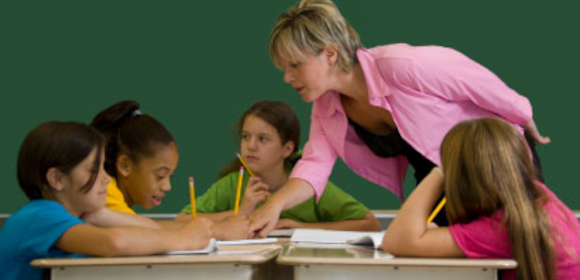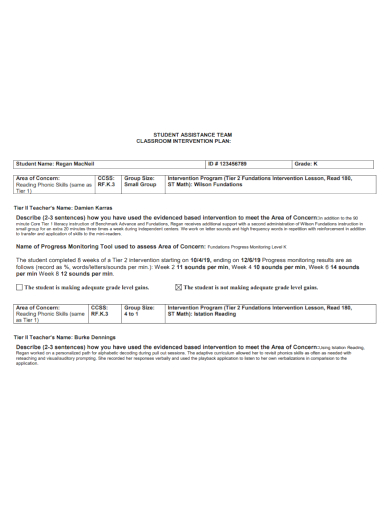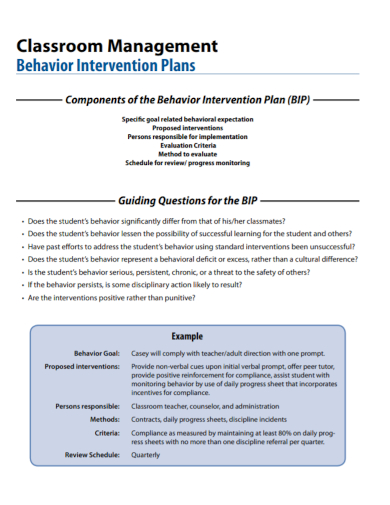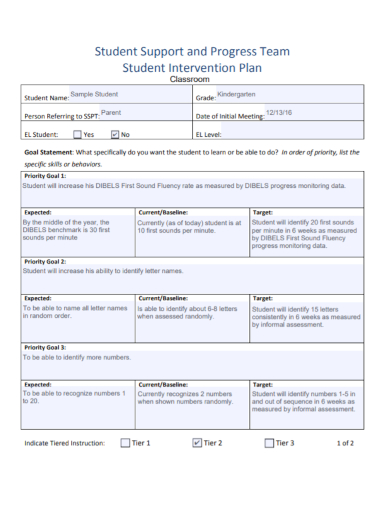Today, students face more challenges in school as pressure around their school environment and even at home, continues to raise their expectation for students to get high grades. According to the National Institute of Mental Health, emotional and behavioral disorders affect 10-15% of children worldwide. And if you’re a teacher reading this article, you might have students that may be deemed as problematic but they might be facing their own problems and don’t know how to deal with them. It is the duty of a teacher to learn how to identify the students’ behavioral and academic areas of need and address them before they fall behind. Read the article to get some tips on how to create a classroom intervention plan.
6+ Classroom Intervention Plan Samples
1. Classroom Behavior Intervention Plan Template
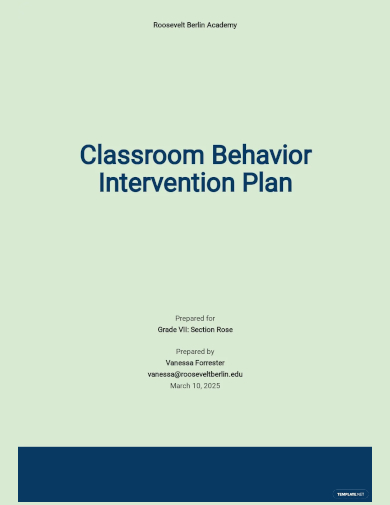
2. Classroom Intervention Plan
3. Student Classroom Intervention Plan
4. Classroom Management Intervention Plan
5. Classroom Intervention Plan Sheet
6. Student Support Classroom Intervention Plan
7. Classroom Behavior Intervention Plan Worksheet
What is Intervention in the Classroom?
Classroom intervention is a series of steps undertaken by a teacher to help a student improve in their weak areas by removing educational barriers. There are four key components of classroom intervention:
- Proactive: Deals with areas of need before they become a larger obstacle in learning.
- Intentional: Addresses an observed weakness.
- Formal: Uses methods targeting specific needs and tracking their progress.
- Flexible: Adjusts methods based upon the student’s needs.
In the classroom, teachers may observe and identify problems with a student’s behavior or academic performance. Sometimes, the same child needs improvement in both areas. Although often connected, these issues are addressed using different types of interventions. For example:
- Behavior intervention: This type of intervention addresses a student’s behavior problems at school. When using this method, teachers will determine the main factor behind a student’s wrong action by using a functional behavior assessment. Once the factor behind the behavior is identified, teachers can create an effective behavior intervention plan to teach appropriate behaviors to the student while meeting their needs.
- Instructional intervention: This type of intervention deals with a student’s academic problem areas, such as reading, math, or another subject. This type of intervention involves more detailed tracking of progress and frequent adjustments to reach a learning method that is effective in improving the student’s proficiency.
How to Create a Classroom Intervention Plan
1. Know What You Want to Achieve
For you to plan an effective intervention, first, identify the students that need assistance and what are the aims you wish to achieve. This will help you know what intervention you’ll be doing, and how to implement it. Make sure the intervention and its outcome are easy to monitor and evaluate so you can demonstrate the impact of the program.
2. Review the Assistance Available at Your School
Once you have selected the students for the intervention, next look at the assistance that is readily available in your school. See how these resources offer effective intervention.
3. Create A Strategy Plan
Strategic planning is useful when you need to address any challenges you may face. You can personalize the intervention depending on their areas of need, skills, and talents. Make the intervention fun to grab your student’s full attention and make the sessions more memorable. You can use different activities to keep them engaged. Discuss with your co-teachers how to conduct the intervention by increasing their knowledge and understanding of it. Make sure each teacher who will conduct the intervention is fully committed to the program.
4. Make an Assessment of the Intervention
Throughout the intervention session, know how the faculty involved will assess and give feedback on the progress and hitting the target. Don’t forget to make sure you have collected enough evidence of the intervention’s impact. For example, a journal created by the student reflects their increased understanding of their lessons.
FAQs
What are the different types of intervention at school?
The different types of interventions strategies used in schools are:
- Behavioral intervention
- Collaborative intervention
- One-to-One interventions
- Classroom-based interventions
- Social, emotional, and well-being intervention
- Peer tutoring
- Homework
What are the students’ needs in the classroom?
A student’s needs in the classroom that must be accomplished by the educator are personal safety of the student, a clean and functional classroom to learn in, development and learnings of the student in their classes, and provided materials to aid in their learning.
How do students learn best in the classroom?
Students learn best when a classroom has active and social activities where interaction and learning approaches connect the new knowledge being taught to the concepts that they already know.
Effective classroom intervention strategies help teachers come up with structured methods for identifying areas of weakness and helping students increase academic proficiency. If the intervention was a success, discuss the factors that made it a success with other faculties and school administrators. Reach an agreement to share the practice with the rest of the school, and even consider if the intervention could be applied by other year levels. To help you get started on making your own classroom intervention plan, you can check out the sample templates provided above. They are free and easy to download.
Related Posts
FREE 10+ College Student Inventory Samples
FREE 10+ Child Care Risk Management Plan Samples
FREE 10+ Academic Research Plan Samples
FREE 10+ Quality Improvement Report Samples
FREE 10+ Behavior Modification Plan Samples
FREE 9+ Informal Assessment Samples
FREE 9+ Behavior Log Samples
FREE 7+ Teacher Evaluation Samples
FREE 6+ Sample Jeopardy Game
FREE 43+ Sample Work Plan
FREE 35+ Sample Action Plan
FREE 16+ Activity Evaluation Form Samples
FREE 14+ Sample Corrective Action Plan
FREE 13+ Progress Report Card Templates
FREE 10+ Management Memo Samples
